Джон Фаулз - The Tree
Здесь есть возможность читать онлайн «Джон Фаулз - The Tree» весь текст электронной книги совершенно бесплатно (целиком полную версию без сокращений). В некоторых случаях можно слушать аудио, скачать через торрент в формате fb2 и присутствует краткое содержание. Жанр: Современная проза, на английском языке. Описание произведения, (предисловие) а так же отзывы посетителей доступны на портале библиотеки ЛибКат.
- Название:The Tree
- Автор:
- Жанр:
- Год:неизвестен
- ISBN:нет данных
- Рейтинг книги:5 / 5. Голосов: 1
-
Избранное:Добавить в избранное
- Отзывы:
-
Ваша оценка:
- 100
- 1
- 2
- 3
- 4
- 5
The Tree: краткое содержание, описание и аннотация
Предлагаем к чтению аннотацию, описание, краткое содержание или предисловие (зависит от того, что написал сам автор книги «The Tree»). Если вы не нашли необходимую информацию о книге — напишите в комментариях, мы постараемся отыскать её.
The Tree — читать онлайн бесплатно полную книгу (весь текст) целиком
Ниже представлен текст книги, разбитый по страницам. Система сохранения места последней прочитанной страницы, позволяет с удобством читать онлайн бесплатно книгу «The Tree», без необходимости каждый раз заново искать на чём Вы остановились. Поставьте закладку, и сможете в любой момент перейти на страницу, на которой закончили чтение.
Интервал:
Закладка:
There is certainly something erotic in them, as there is in all places that isolate and hide, but woods are in any case highly sensuous things. They may not carry more species than some other environments, but they are far richer and more dramatic in sensory impressions. Nowhere are the two great contemporary modes of reproducing reality, the word and the camera, more at a loss; less able to capture the sound (or soundlessness) and the scents, the temperatures and moods, the all-roundness, the different levels of being in the vertical ascent from ground to tree — top, in the range of different forms of life and the subtlety of their inter-relationships. In a way woods are like the sea, sensorially far too various and immense for anything but surfaces or glimpses to be captured. They defeat view-finder, drawing-paper, canvas, they cannot be framed; and words are as futile, hopelessly too laborious and used to capture the reality.
It is not for nothing that the ancestors of the modern novel that began to appear in the early Middle Ages so frequently had the forest for setting and the quest for central theme. Every novel since literary time began, since the epic of Gilgamesh, is a form of quest, or adventure. Only two other environments can match the forest as setting for it; and even then, not very favourably. The horizontality of the sea hides too little. The only screen in outer space is space itself. They are also much remoter from our human scale, their vistas far less immediately and incessantly curtailed. Never mind that the actual forest is often a monotonous thing, the metaphorical forest is constant suspense, stage awaiting actors; heroes, maidens, dragons, mysterious castles at every step.
It may be useless as a literal setting in an age that has lost all belief in maidens, dragons and magical castles, but I think we have only superficially abandoned the basic recipe (danger, eroticism, search) first discovered by those early medieval writers. We have simply transferred the tree setting to the now more familiar brick-and-concrete forest of town and city. Certain juxtapositions of tree and building, especially in city hearts, and perhaps most strikingly of all in New York, have always rather touched me: the sight of those literal and symbolic leaf-walls standing side by side, half — hiding, half — revealing, can be strangely poetic, and not just in architectural terms. Older and less planned quarters of cities and towns are profoundly woodlike, and especially in this matter of the mode of their passage through us, the way they unreel, disorientate, open, close, surprise, please. The stupidest mistake of all the many stupid mistakes of twentieth-century architecture has been to forget this ancient model in the more grandiose town-planning. Geometric, linear cities make geometric, linear people, wood cities make human beings.
This assertion would have seemed very near heresy to the medieval mind, and politically dangerous to those of the Renaissance and seven-teenth — century Europe. The attraction of the forest setting to the early pioneers of fiction was in no way an attraction to the forest itself. It was clearly evil; but being evil, gave convenient excuse for the legitimate portrayal of all its real or supposed dangers to the traveller. The church might complain about the eagerness with which the educated public throughout Europe took to these tree-tales of adultery, magic, mystery, monsters, eternal danger and eternal temptation. But it could hardly deny the general truth of a proposition it was itself increasingly determined to maintain: the inherent wickedness of godless nature, in outer reality as in man himself. Raymond Chandler and the other creators of our own century’s private eyes have used exactly the same technique, substituting evil city for evil trees and then giving themselves a comprehensive licence, behind the pretext of an incorruptible hero, to describe all the vices, horrors and seductions from the straight path whose gauntlet he has to run in order to earn the adjective. Sir Galahad and Philip Marlowe are blood brothers.
During very nearly all of the last thousand years true human virtue (and virtuous beauty) has lain for European mankind in nature tamed, on its knees inside the hortus conclusus, or emblematic walled garden of civilization. So powerful» was this concept that naturalistic artistic representation of wild landscape is entirely absent before the seventeenth century, and so rare then that one might almost say, before the advent of the Romantic Movement; while public concern for nature, with positive steps to protect it, did not come until well into the nineteenth century and even then only very intermittently. Our own, the last of the millennium, is in fact the first to show some sort of general and international concern, and l do not think we should be too self — congratulatory about that. The future may l well judge that we had both the scientific awareness and the political organization, the potential, to do much more than we have done.
Nor is it simply that in the medieval beginnings of our suspicious attitude to nature so many artists employed the literal imagery of the garden i of Eden, of Paradise, of Virgin and docile unicorn in a bower. Even when wilderness and chaos — the two were virtually synonymous — had to be shown in such things as the backgrounds of l hermit and hell pictures, they were as formally l arranged, as parklike, as the closed garden itself; exactly as if the physical limits of the painting were metaphorical garden walls, and nothing inside could be presented as it really existed, behaved and grew. Of course this high formality now seems to us one of the great charms of medieval art, and one cannot blame the earlier medieval artists for failing to put down what they in any case lacked the techniques to represent, even if they had possessed the wish and the clear vision.
But those techniques came, and it seems to me that nothing is more revealing than the inability of such artists as Pisanello and Dürer to compass the reality of the wild — for all their determination in other things, such as human portraiture, to look nature entire in the face. Clearly two such sharp observers and superb draughtsmen could technically have conveyed it; yet some deep mental blindness, or complex, prevented them. Dürer’s tuft of violets or his hare, Pisanello’s lizards, stags, his hoopoe and his cheetah (surely the most beautiful single drawing ever done of that animal) may seem to us as 'natural’, as realistic as a modern photograph. But in terms of art history they must also seem surreptitious, bearing a faint stigma of the pornographic, of a secret wickedness the more public artist had to deny; for as T soon as such individual elements become no more than components in a wider scene, they must be gardened, artificially posed and arranged, turned into mere emblems.
We all have our favourite pictures, or ikons, and one of mine has long been a painting by Pisanello in the National Gallery in London, The Vision of St. Eustace. The saint-to-be sits on his horse in a forested wilderness — he is out hunting — arrested before his vision of a stag bearing Christ crucified between its antlers. Other animals, birds and flowers crowd the background of the small picture. The artifice of the ensemble, above all when compared with Pisanello’s own survived work-sketches of individual beast and bird in it, is almost total. The sketches and drawings are entirely and dazzlingly naturalistic; yet in the painting their subjects become as heraldic and symbolic, as unreally juxtaposed, as beasts in a tapestry. I know no picture that demonstrates more convincingly, and touchingly, this strange cultural blindness, and it is fitting that Pisanello should have chosen the patron saint of dogs (and formerly of hunting, before St Hubert usurped that role) as the central figure, and distorter of the non-human life around him. What is truly being hounded, harried and crucified in this ambiguous little masterpiece is not Christ, but nature itself.
Читать дальшеИнтервал:
Закладка:
Похожие книги на «The Tree»
Представляем Вашему вниманию похожие книги на «The Tree» списком для выбора. Мы отобрали схожую по названию и смыслу литературу в надежде предоставить читателям больше вариантов отыскать новые, интересные, ещё непрочитанные произведения.
Обсуждение, отзывы о книге «The Tree» и просто собственные мнения читателей. Оставьте ваши комментарии, напишите, что Вы думаете о произведении, его смысле или главных героях. Укажите что конкретно понравилось, а что нет, и почему Вы так считаете.

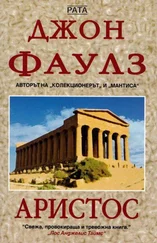
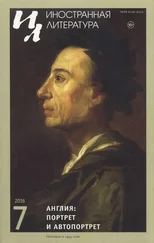
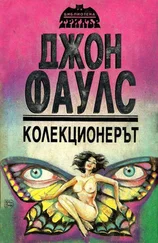
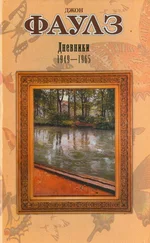



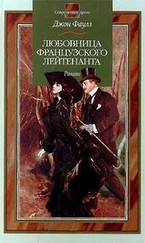
![Джон Фаулз - Вылазка в действительность [антология]](/books/431648/dzhon-faulz-vylazka-v-dejstvitelnost-antologiya-thumb.webp)
![Джон Фаулз - Мантисса [litres]](/books/438194/dzhon-faulz-mantissa-litres-thumb.webp)